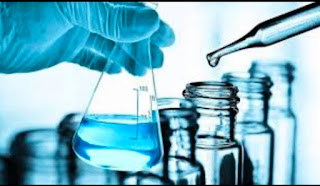BIOLOGICS VS BIOSIMILARS
BIOLOGICS VS BIOSIMILARS
Since 19th century, biologics are used as vaccines. In 1982, USFDA has approved human insulin – first bacteria generated biologic. Biologic drugs contain components from living organisms & hence differ from traditional pharmaceutical drugs. They consist of complex structures, larger molecules and are not easily reproducible.
Examples of biologics:
✓ Vaccines (HPV vaccine for prevention of cervical cancer).
✓ Blood and blood products (platelets).
✓ Tissue transplantation (tendons & ligaments).
✓ Recombinant proteins (insulin).
✓ Monoclonal antibodies.
✓ Stem cell therapies.
BIOLOGICS & CANCER:
Biological therapy provides a targeted and discrete approach that has transformed oncology treatment. Cancer cells have many paths to avoid demolition by immune system. Immunotherapy through biologics triggers the immune system to target and attack cancer cells.
Biological therapy is not as common as chemotherapy and radiation therapy, and possibly has some side effects than traditional cancer treatments. Biologics have been developed to decrease the growth of tumor cells. Introduction of biologic therapies has provided treatment for few types of advanced or metastatic tumors, before which they were not effective.
BIOSIMILARS & HOW THEY DIFFER FROM BIOLOGICS:
Due to expensiveness of biologics, new legislation was introduced to enable bio-similar production to provide vast treatment options, increase access and reduce the cost. Once regulatory exclusivity & intellectual property considerations are addressed for biologic, manufacturers can seek approval to market a highly similar version of the original biologic drug – bio-similar.
FDA requires that bio-similar products are highly similar to the reference product. To be approved for the use manufacturers must prove that..,
✓ Bio-similars has same strength & dosage; therefore it can be administered as the original biologic medication.
✓ Should not have any clinical differences in its safety & efficacy when compared to reference product.
✓ Must maintain same high standards for manufacturing.
DIFFERENCE BETWEEN BIOSIMILARS & GENERIC MEDICINES:
Bio-similar are not exact copies, rather highly similar to active ingredient of the reference biologic, making them different from generic drugs. Generic medicines consist of small molecules and are easy to copy and reproduce. An active ingredient of generic drug has same active ingredients of a branded drug. Bio-similars, like all biologics, are subject to inherent minor variability & may have minor differences in clinically inactive components, but are highly similar to original product.
INTER CHANGABILITY OF A BIOSIMILAR WITH THEIR SIMILAR BIOLOGIC:
Conversion of a reference biologic to its bio-similar appears to be safe and affective only under prescriber’s consent.
From reference biologic to bio-similar the studies led the FDA has approved the disease modifying anti-rheumatic drug bio-similar infliximab-abda, infliximab-dyyb and etanercept-szzs. All of them included switches from reference biologic to the bio-similar. From a practical standpoint, as bio-similar gets proliferated, it would be a great challenge to perform such type of study and could never incorporate all the products for the approval.
THE FUTURE OF BIOLOBICS & BIOSIMILARS:
Biologics have transformed the treatment of cancers: autoimmune disorders; genetic conditions are positively changing many people’s future. Regardless the type of treatment used both revolutionary solutions point to exciting future developments in treatment of cancer & other complex diseases.
References:
https://www.phrma.org/en/Advocacy/Research-Development/Biologics-Biosimilars
https://badgut.org/information-centre/a-z-digestive-topics/biosimilars-pamphlet/
T.Jahnavi,
B.Pharmacy IV year,
Student at Clinosol.
Student ID - (CSRPL_INT_ONL_WKD_069/0421).




Comments